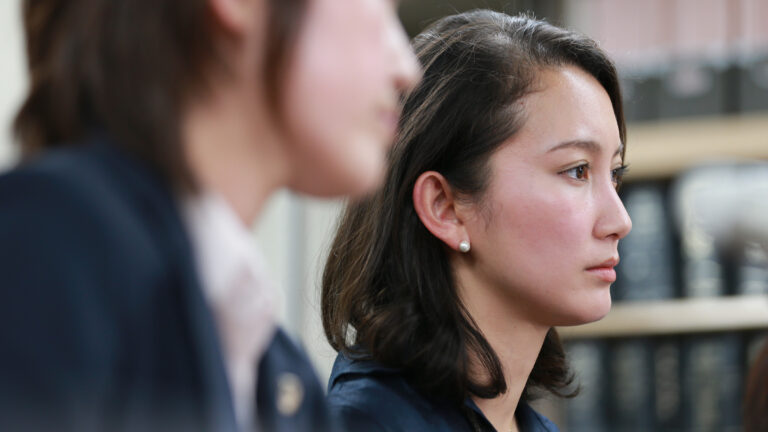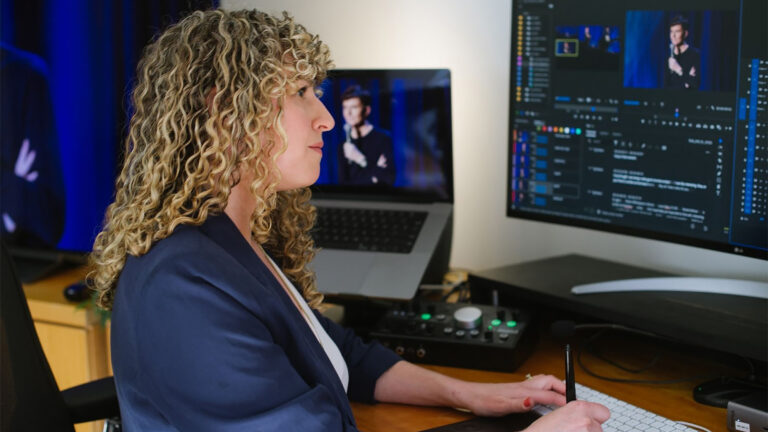Back in 2012, two teens from South Carolina came up with an ingenious concept for a video in which the “weapons” were created by taking pieces of chalk and drawing them on a hard surface—and then lifting them off to employ them in impossible “battles.”
Chalk Warfare became a viral sensation for Sam Wickert and Eric Leigh of SOKRISPYMEDIA, who’ve since gone on to produce inventive cutting-edge visual effects for clients like Google Daydream, Red Bull, and Intel.
It’s been six years since Chalk Warfare 3.0 was released, and it’s pretty safe to say that in those years, the technology and the techniques have made it possible to create new kinds of jaw-dropping visual effects—especially with Sam and Eric pushing the boundaries. So today, we’ll take you way behind the scenes of Chalk Warfare 4.0 to see how they used Frame.io and an arsenal of other tools to help bring their latest epic battle to their anxious viewers worldwide.
If you haven’t already seen version 3.0, here it is:
A high bar
When you’ve got a YouTube following of nearly a million subscribers and are getting hundreds of millions of views, it’s not always easy to keep upping your game. But somehow, Sam and Eric and their team seem to always find a way.

For this episode, they started with big ambitions and big stunts, based on the feedback and requests they got from their loyal following about what they’d love to see next. Chalk Warfare 4.0 nods to everything from Mission: Impossible – Fallout with a spectacular skydiving sequence, to Star Wars lightsaber battles, to Pacific Rim-style robots. It’s a 15-minute VFX feast of non-stop action and impossible weapons.

Wait. Fifteen minutes with nearly every shot containing some kind of effect? Let’s stop and do the math. If you’re shooting at 24fps and rotoscoping or compositing on nearly every frame, you’re talking about 21,600 frames total. It’s a ton of work, and the level at which these guys deliver is Hollywood-grade—on a YouTube budget.
Post-production starts in pre-production
According to Sam, when they did the first Chalk Warfare, “They were short videos and I had it all plotted out in my mind. We used a minimal setup and minimal locations, so it wasn’t that hard to execute.”
Chalk Warfare 4.0 is a very different kind of production. “It’s the fourth installment,” Sam explains, “so we thought we’d do four teams of four people, and there’s a huge Battle Royale kind of experience with a big finale.” The cast of 16 included actor Jamie Costa, YouTubers Lana LeStrange, Star Wars Theory, and Dom Fera, vine wizard Zach King, and more.
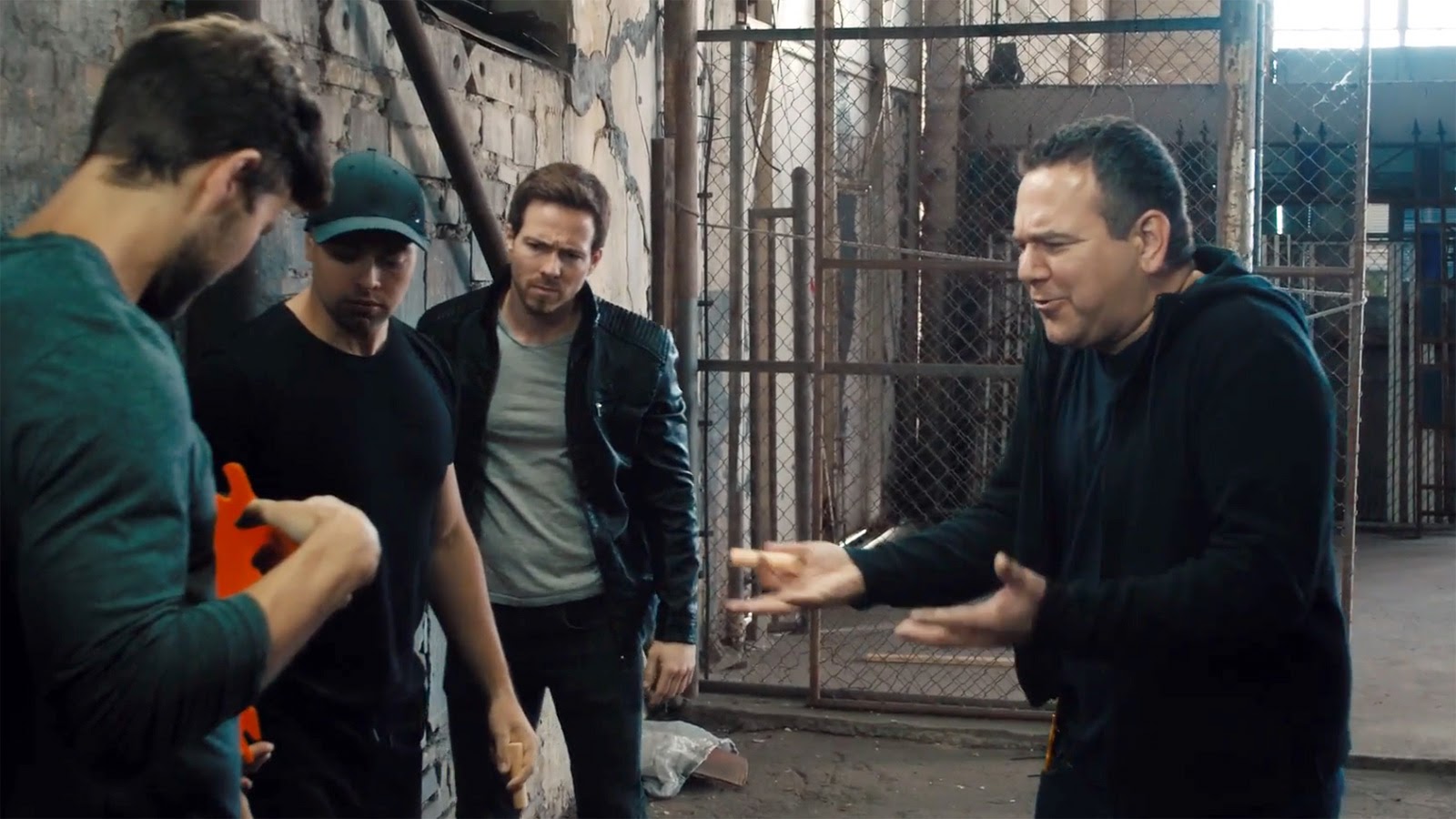
Sam started by creating a rough outline of all the set pieces he wanted to incorporate. From there, he derived a shot list. The episode is light on dialogue and heavy on action, so there’s a big focus on what the weapons are and how they’re created. In a reversal of how they previously created the weapons—using cardboard originals and recreating them in CG—this time, they started by creating them as CG elements first, so they could have someone fabricate actual acrylic props with tracking dots attached for the actors to use. This gave them a 1:1 match in the computer for accurate tracking, using applications including SynthEyes and Mocha from Boris FX, which made it simple to then apply the chalk texture and particle animation in post.
The next big pre-production step involved the opening sky diving sequence. “I pre-vised that entire section using 3D Studio Max,” Sam says. “Because we actually took a team of skydivers up in a plane, it was important for us to have them rehearse the choreography so we could be sure that it was clear to everyone exactly what we needed them to do.”
After that sequence, Sam was able to rely more on his instincts and simpler storyboarding for the remainder of the video, creating 3D versions of the locations and setups for reference.
An integrated workflow
The team relied on a DaVinci-based workflow, using Blackmagic Ursa Mini Pro G2 cameras, and shooting at 4.6K in 16:9 in RAW to maximize the dynamic range. Then, they edited and color graded in Resolve, running on custom Windows PCs, which made everything smooth and easy to manage. Because they have a robust in-house storage system made by OWC, they were able to work off of the full-res files. Their final output was 3840 x 2160 with a 2.35 aspect ratio for a more cinematic look.
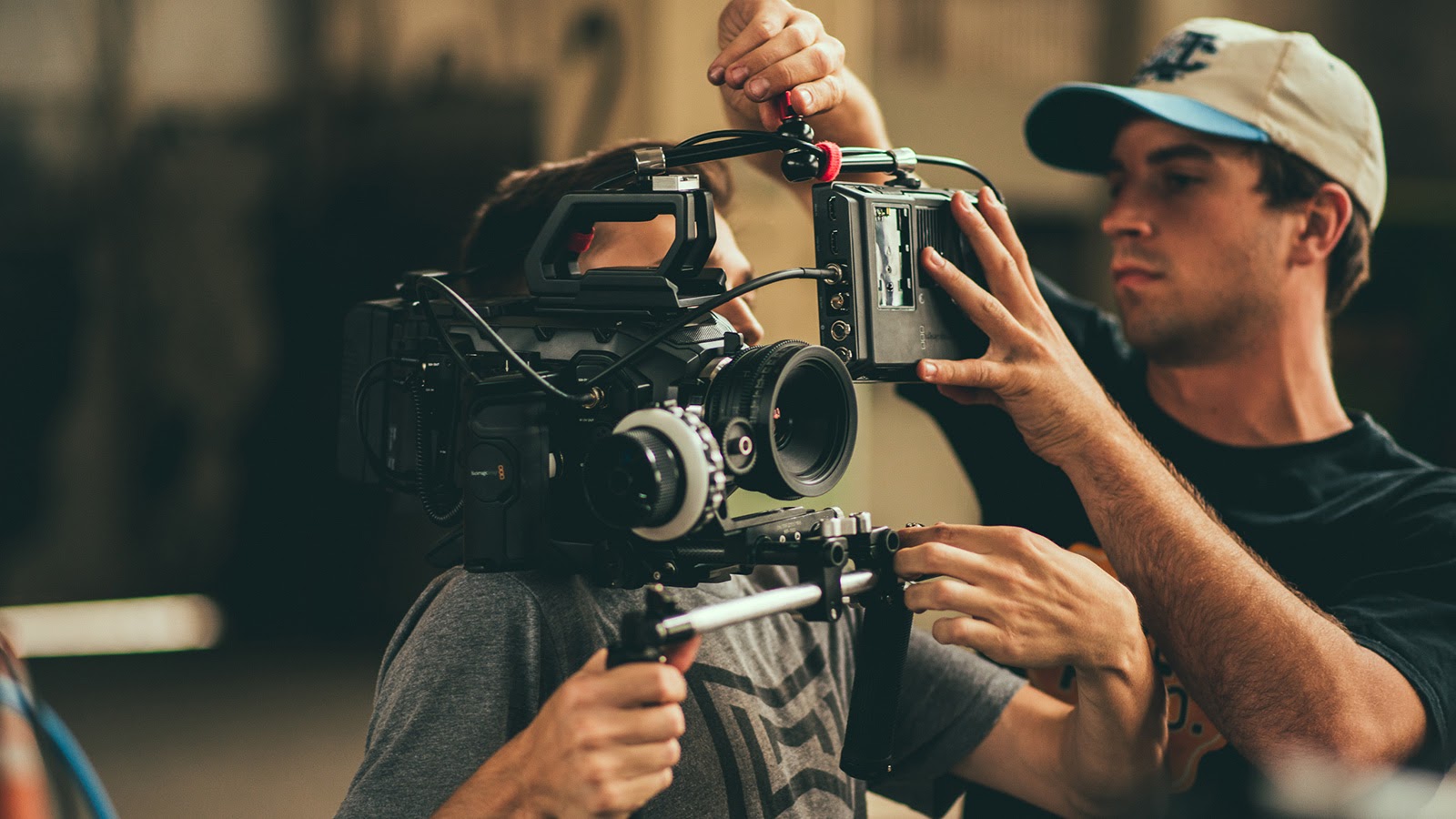
By applying Resolve LUTs, they were able to more consistently balance the looks of the various chalk colors throughout editorial and compositing. “The colors have a pastel look, and it can get difficult when you have a lot of assets to match,” Sam says. “Then, once we’re in the color grading process, we’ll do a final pass to fine tune. Being able to isolate and track the weapons in Resolve gave us a lot of control without having to go back into compositing.”
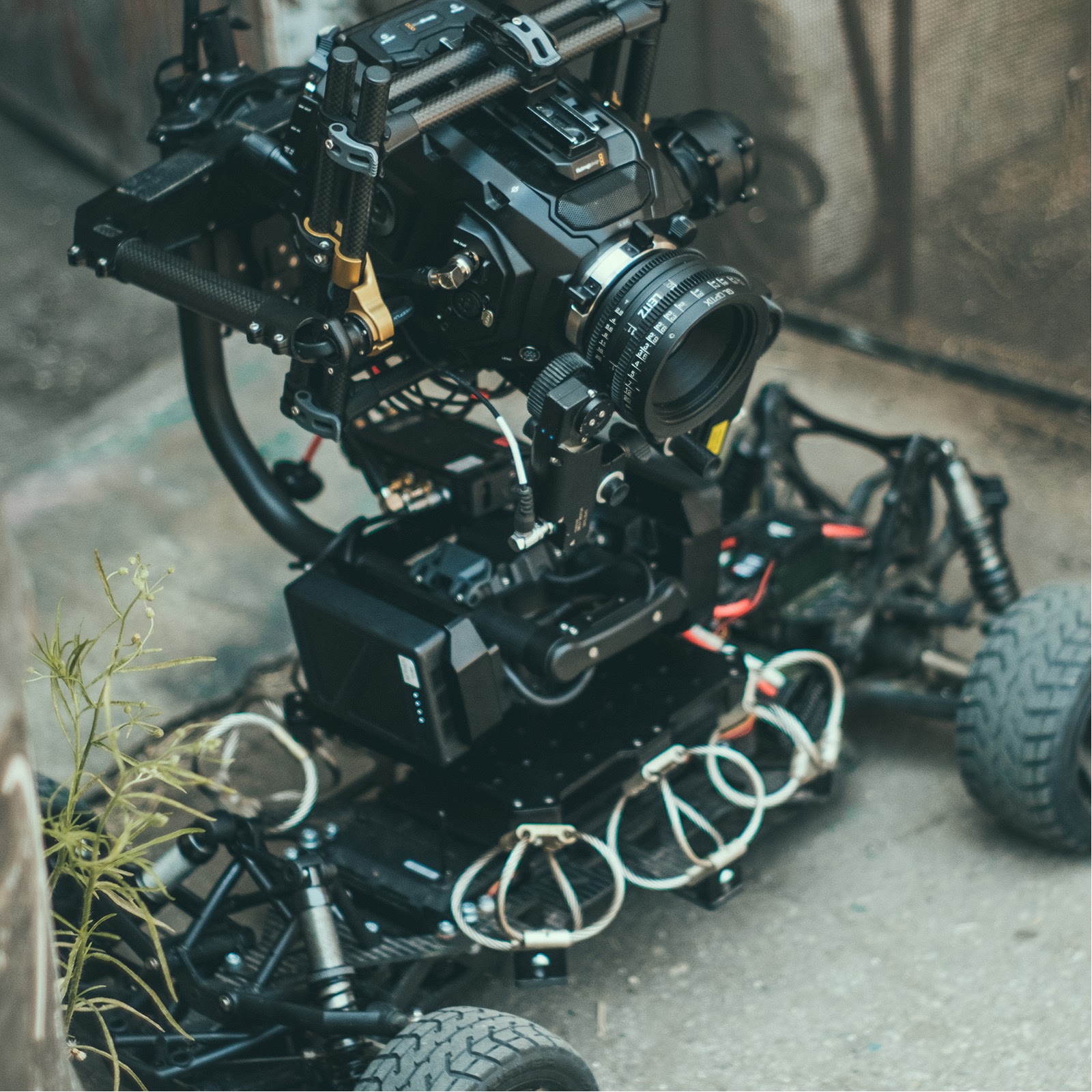
Although they used a variety of compositing and effects applications, they primarily relied on Blackmagic’s Fusion, which works well with Resolve, along with Nuke. The Frame.io integration with Resolve allowed them to easily work with their VFX team throughout post-production. “We worked with artists who were offsite, so we used Frame.io to upload the assets they needed to the cloud,” Sam says. And being able to use annotations to give detailed instructions was vital. “Because we could just draw on the specific frames and make notes, they knew exactly what they had to do. And then it was really easy to review, give notes, or approve shots,” Sam explained. “I was able to use different colors to highlight different aspects of my instructions or feedback so that there was no confusion.”
They also used Frame.io to share work in progress with the rest of the group, approximately ten people in addition to Sam, Eric, and Brendan, the other main VFX artist. “The web-based interface was awesome, to be able to upload footage, and directly preview it. It’s great how quick it is. It’s so easy to get directly from having something, to then sharing it.”
Audio was handled remotely by Andrew Gerlicher, based in LA, who composes the tracks for all of the Chalk Warfare videos, with Eric Crepeau handling sound design and mixing. Again, Frame.io review links played an important part in facilitating that part of the process.
Extra special VFX
Every action movie has its big “money shots” and Chalk Warfare is no different. Obviously, the skydiving opening sequence is spectacular. But there are several other sequences that are no less spectacular, each for its own reasons.
For example, the sequence of the robot bursting through the wall is a clever combination of practical effects and the highest tech available. With the G2 camera set at 300fps, they were able to create practical debris that they could blend with the CG robot as his feet hit the ground to help really sell the effect.

But they also devised an ingenious way to create the robot’s environment synthetically as it breaks through the wall, with a workflow similar to that used on The Mandalorian. First, they created a full 3D environment that they photoscanned to Unreal Engine, where it runs in real time. They then used a Virtual Camera and had the environment played back for reference while Sam captured dynamic movements that could be applied to the environment. The combination of the CG chalk robot and the realistic camera motion as he breaks through the wall creates a seamless effects sequence. The practical debris and some stock elements from Action VFX (explosions, pyro, etc.) add another level of authenticity, giving the effects shots a more organic feel.
Although the Chalk Warfare team prefers to use practical environments whenever possible, there were a couple of sequences that required the use of green screen—most notably with the sniper on the water tower. The tower was very high and too dangerous for someone to go up onto, so they created a small set with a metal railing at ground level for the actor to stand in, and then put green screen around it so they could composite in the sky background.
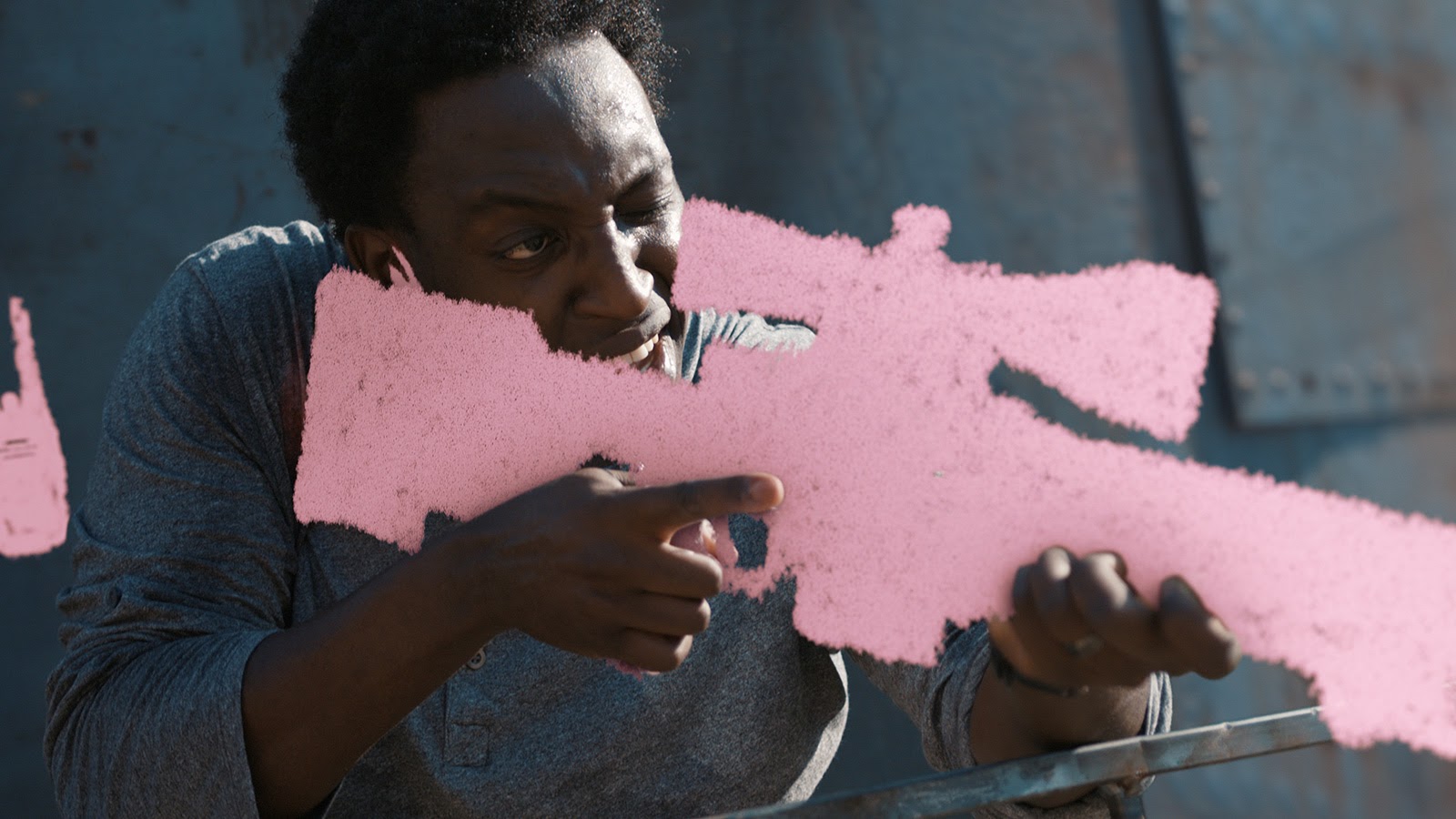
But what was most challenging about the water tower sequence wasn’t the water tower, however. It was the water itself. As a believer in project-based learning, Sam likes to embrace uncharted territory with each Chalk Warfare video in an effort to learn new techniques while wowing his audience. Not unlike what he took on in Chalk Warfare 3.0 with the tearing cloth effect, creating the water was 4.0’s biggest unknown. “Just as we did for all the 3D animation and chalk effects, we used 3ds Max’s tyFlow and Phoenix FD for the particles and simulations for the water and disintegration effects,” Sam says. “We’re always trying to reach a true Hollywood level with our VFX, and we think this sequence proves what we’re capable of.”
On the job training
The challenges Sam and Eric set for themselves is the reason they’ve come so far in their young careers. Teaching themselves how to edit and do VFX from the time they were kids, pushing their PCs to the limit, and continuing to design increasingly complex projects has been their education.
Their uncompromising commitment to excellence is also what drives them in their pursuit of perfection. “I’ve been caught going back to shots that are supposed to be done, which is a big time spender,” Sam says. It’s part of why 4.0, originally slated for release in March, is going live now.
“There’s one sequence with a little car driving by, and when it explodes we were able to do really dynamic particle animation with the wind creating turbulence on the particles. Now that I’ve finished it, I’m much prouder of it.”
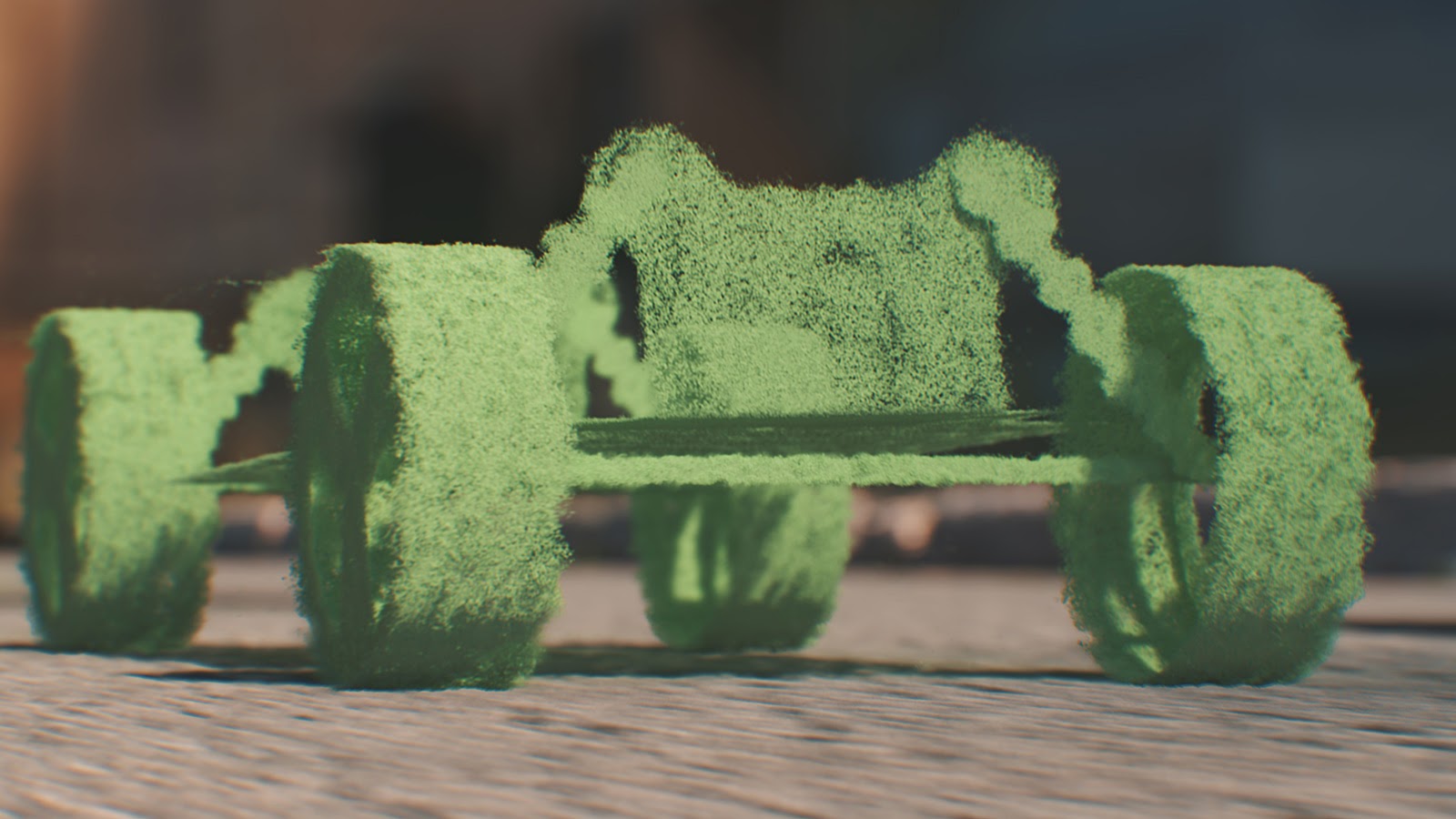
One of the reasons it’s so important to Sam that everything is the best it can possibly be is that these videos will be rewatched numerous times. “I’m a firm believer that these videos get hundreds of thousands of views because of their re-watchability. At the end of the day, I just want to be proud of the content we make, and I want people to understand that these are huge passion projects. We want to create new experiences for people to enjoy, and we want to make them amazing. We won’t stop until they are, so it’s always a matter of time.”
There is no adage in production truer than “fast, cheap, good—pick two.” And when it comes to Chalk Warfare, we know that for Sam and Eric good isn’t close to good enough. That’s why 4.0 is sure to be well worth the wait.



